Abstract
Particulate and soluble antigens were labelled with 125I, injected into rats and the lymphoid organs examined. As determined by autoradiography of tissue sections, one antigen used localized exclusively in vacuoles of medullary macrophages of the lymph nodes and others on the surfaces of reticular cells in the lymphoid follicles of nodes or the white pulp of spleen. The remaining antigens studied localized in both medulla and lymphoid follicles of nodes.
Tissues containing antigen were homogenized in a sucrose medium and most radioactivity was recovered in a large granule fraction. This fraction was submitted to equilibrium centrifugation. The preparations were not resolved in gradients of sucrose or dextran but in gradients of Urografin the preparations were resolved into two or more peaks of radioactivity. Medullary localized antigen banded in a region of the gradient rich in lysosomal enzymes and was considered to be present in vesicles. Antigen was not found in a region of the gradient rich in mitochondria. Antigen from lymphoid follicles of nodes or from spleen white pulp banded at high density values and was considered to be present as an antigen—antibody complex, possibly associated with membrane.
Equilibrium density centrifugation in Urografin gradients provides a means of separating and examining the properties of antigen in lymphoid tissues.
Full text
PDF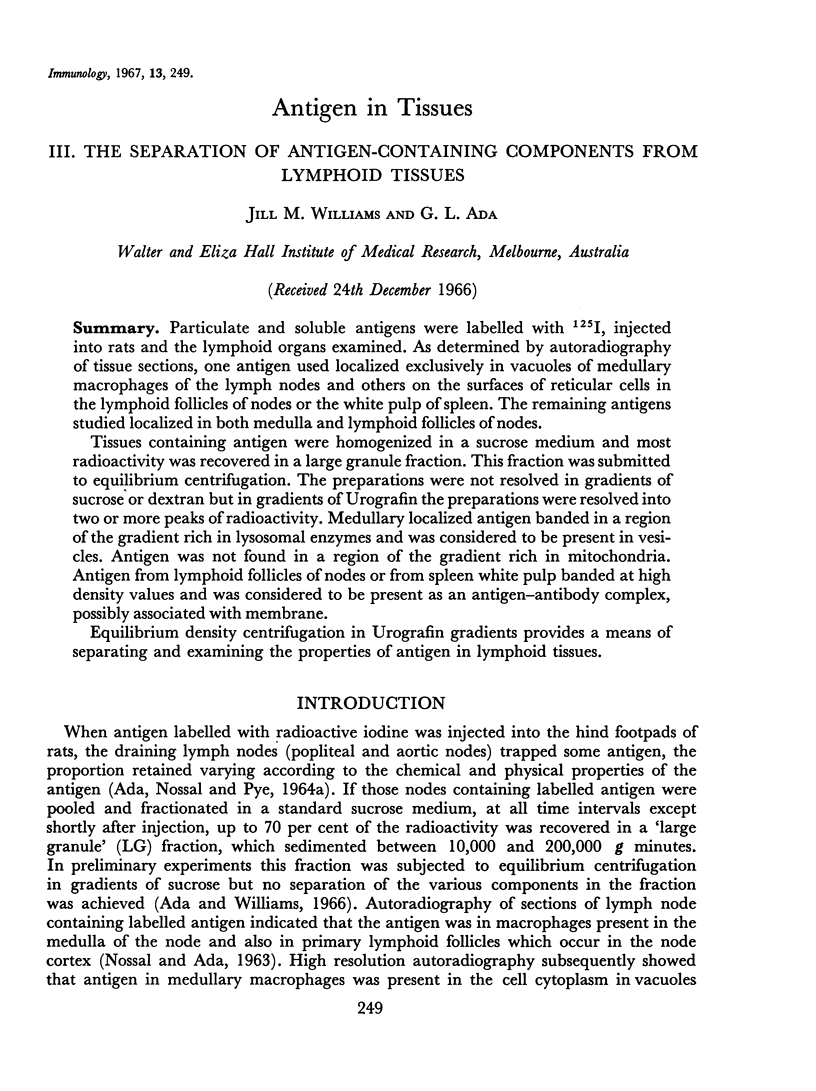
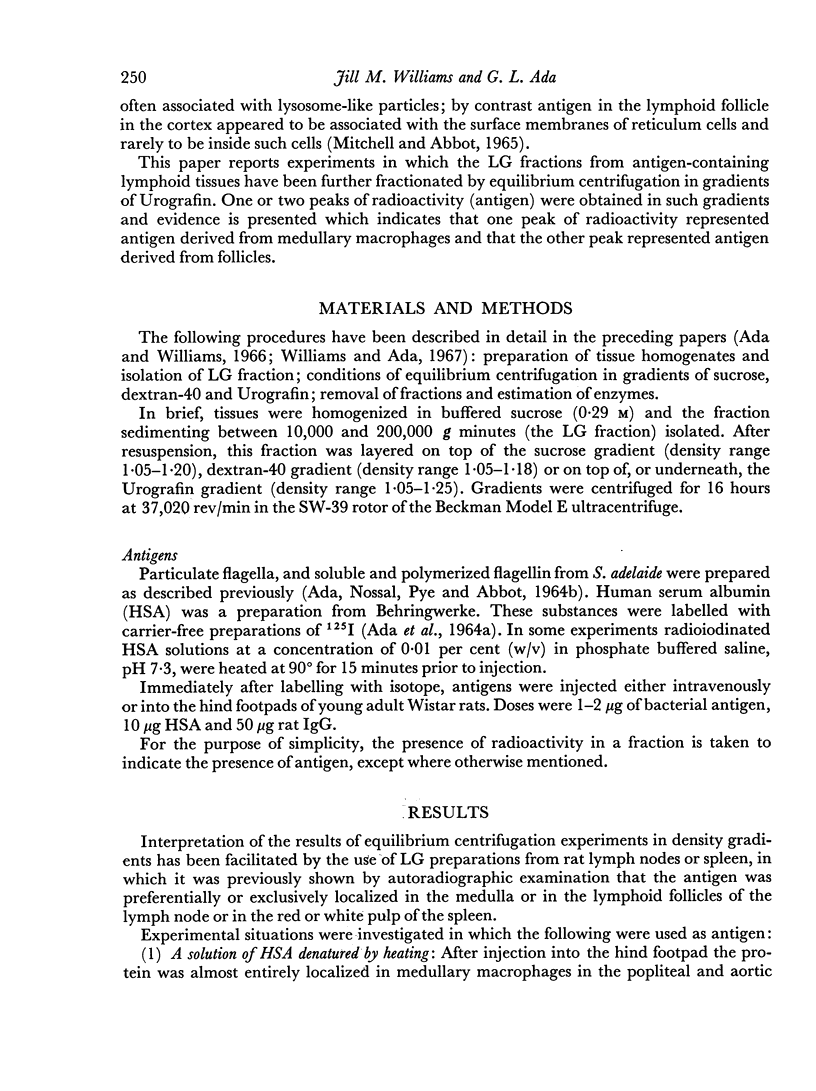
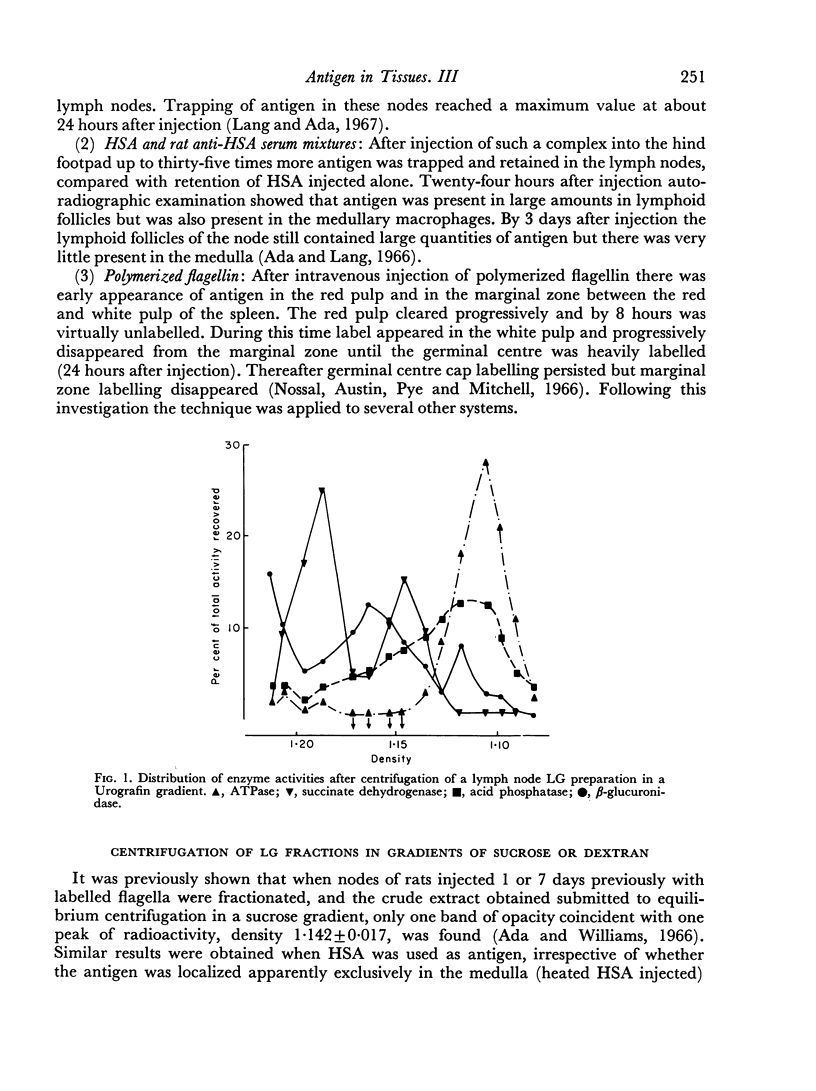
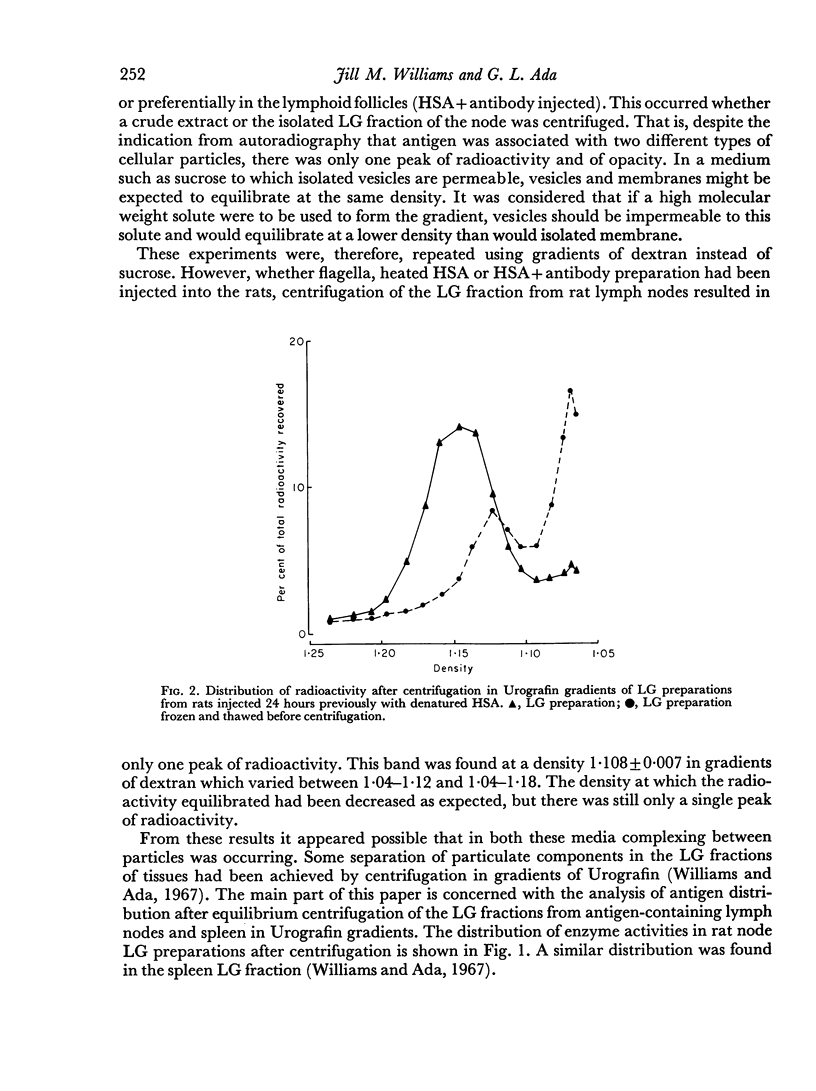
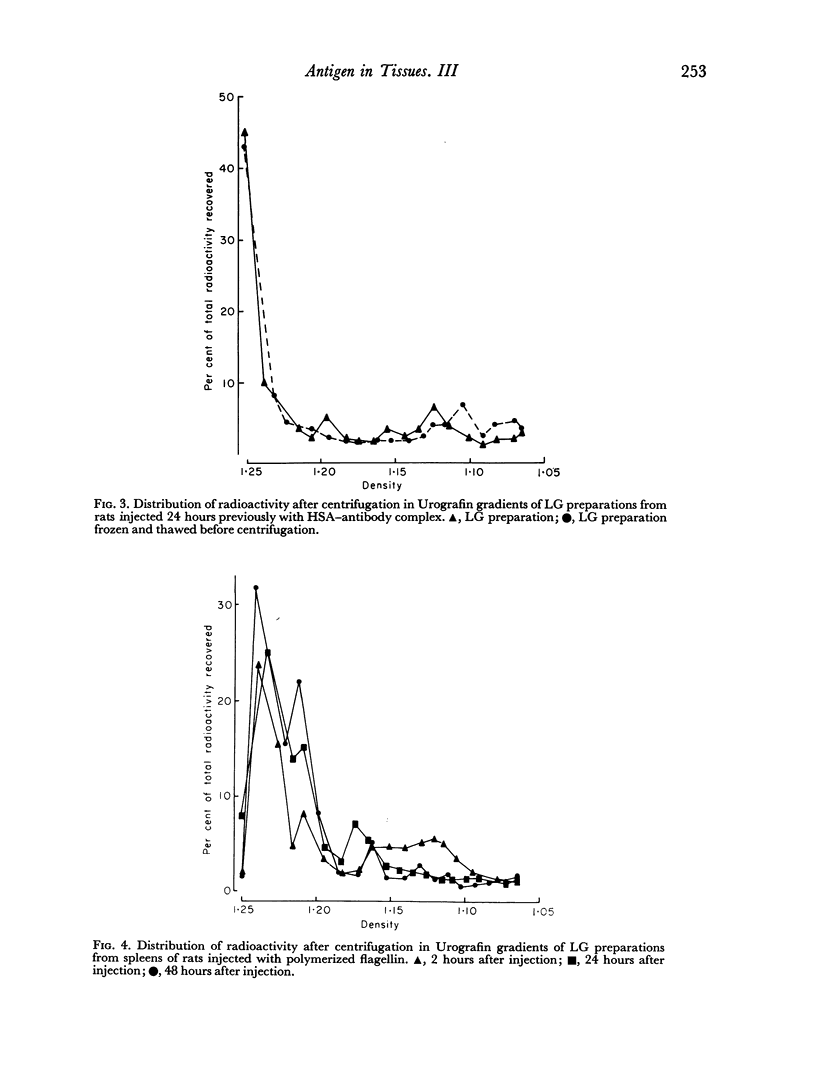
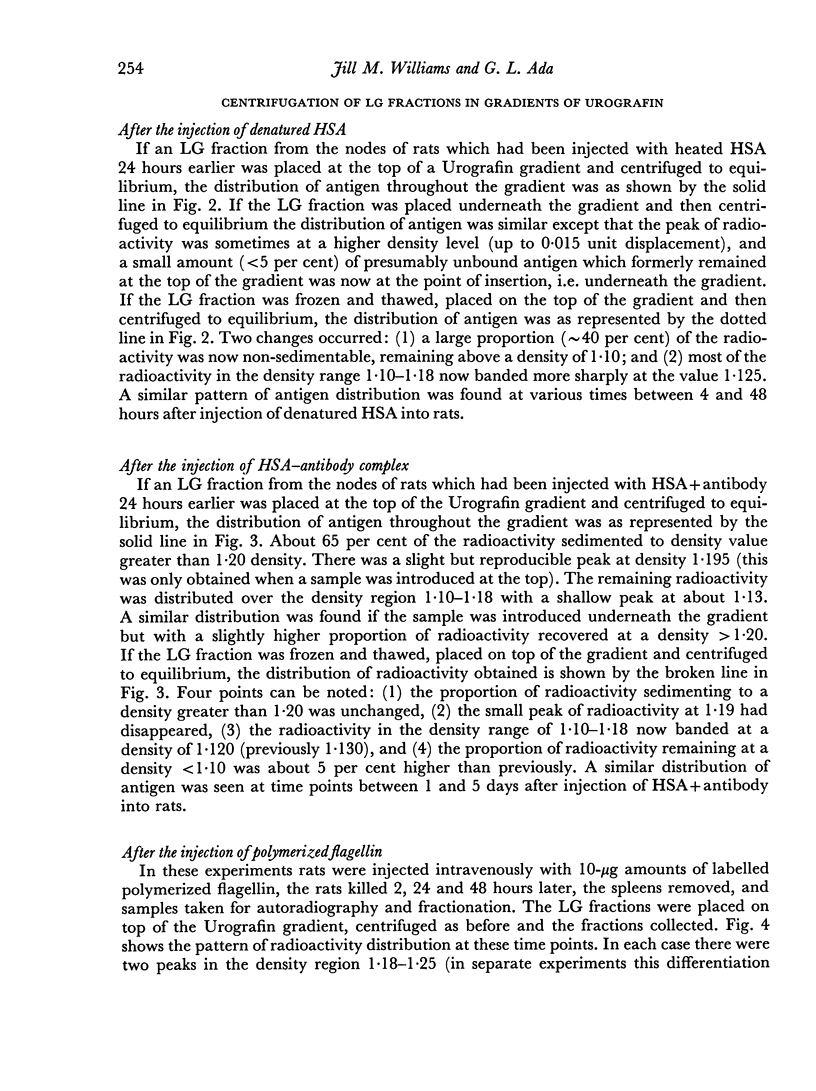
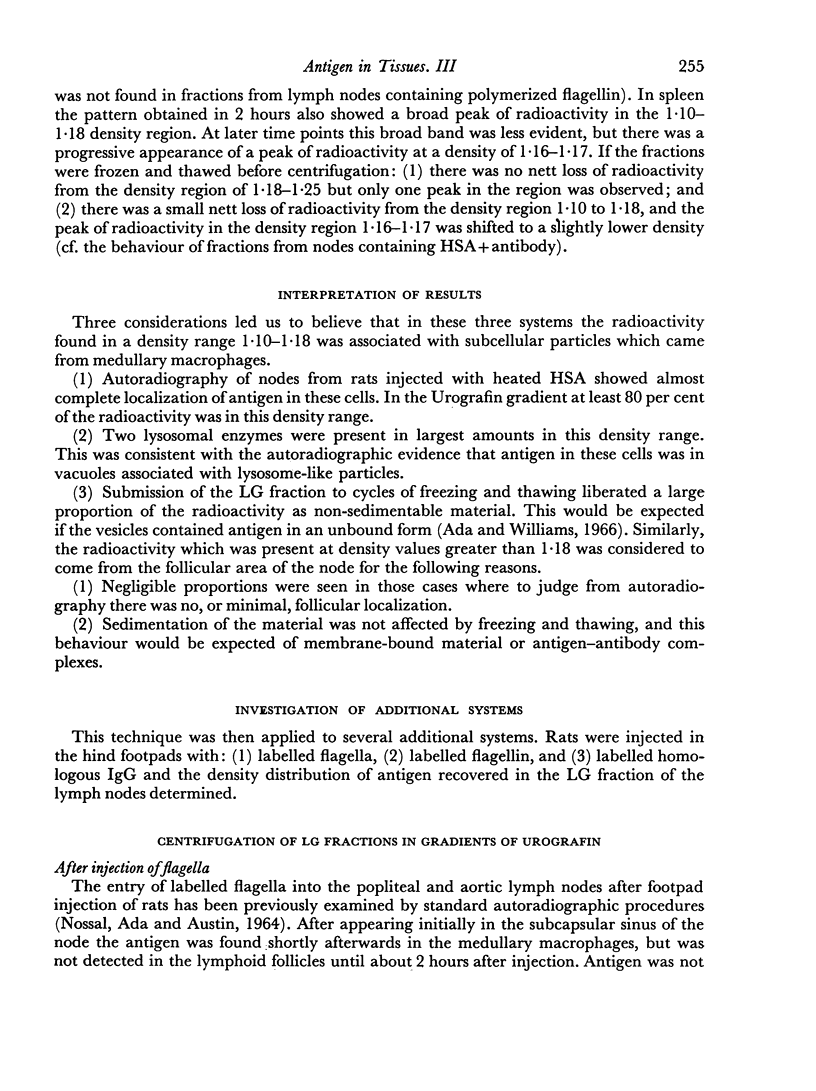
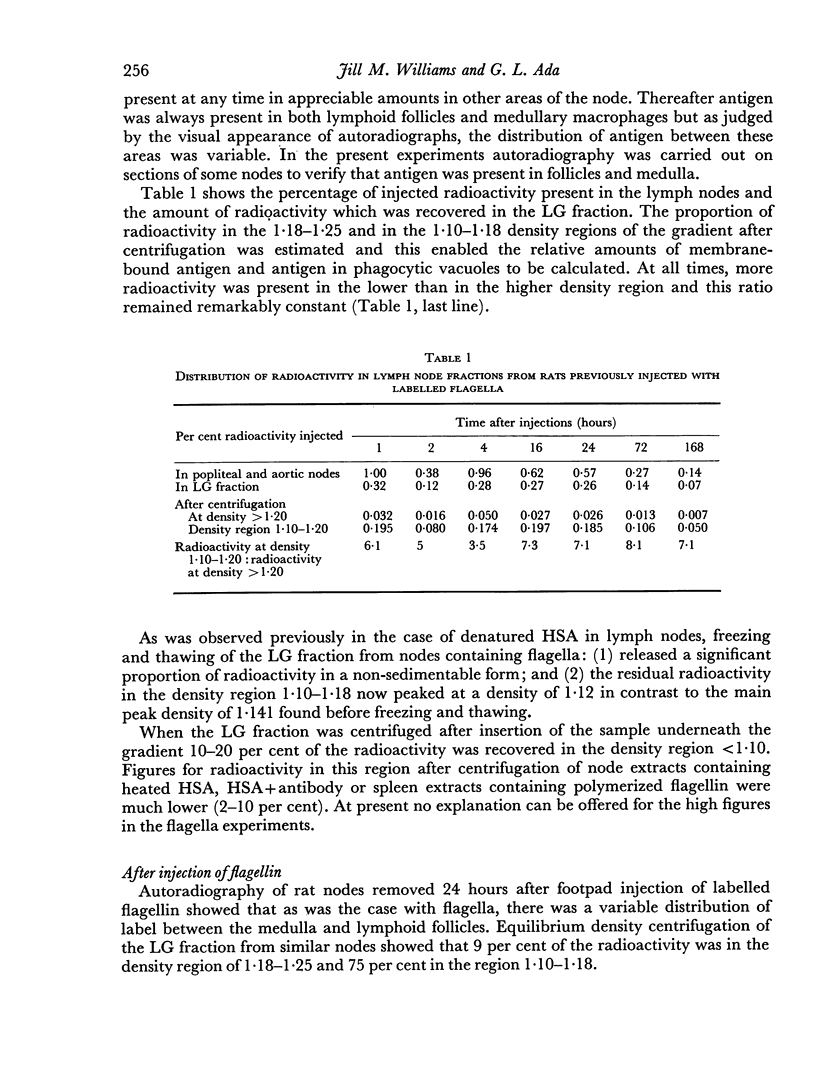
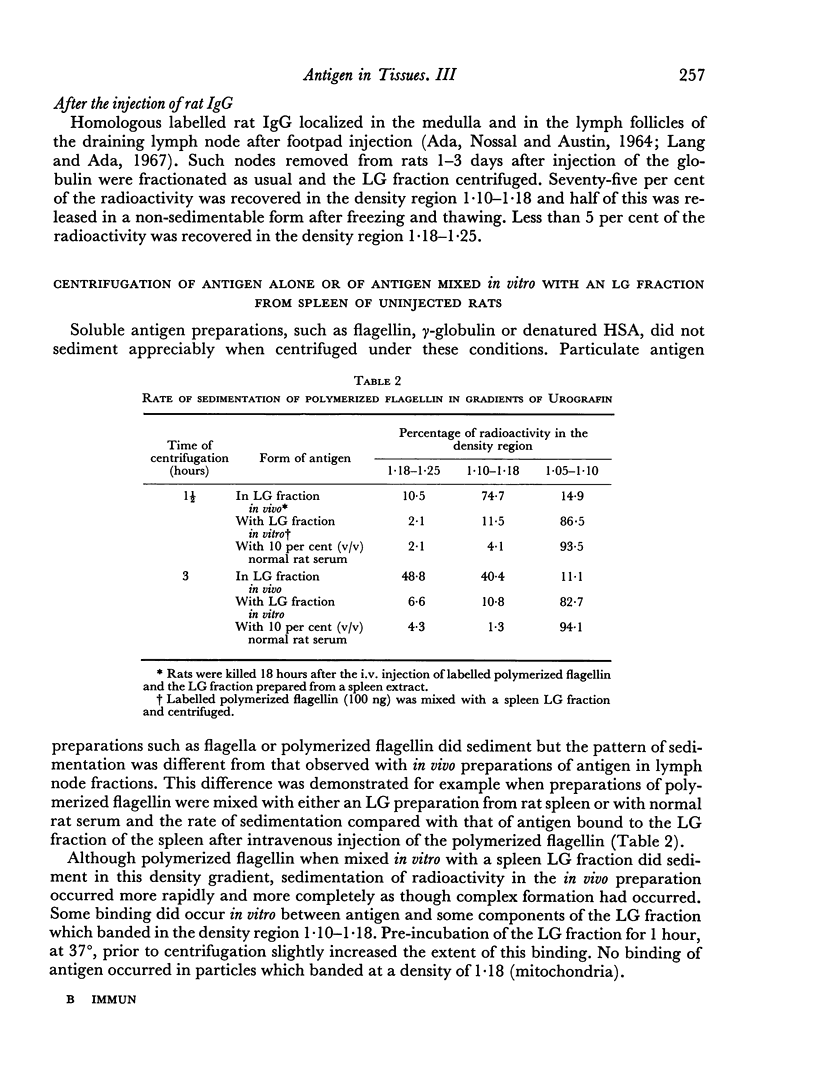
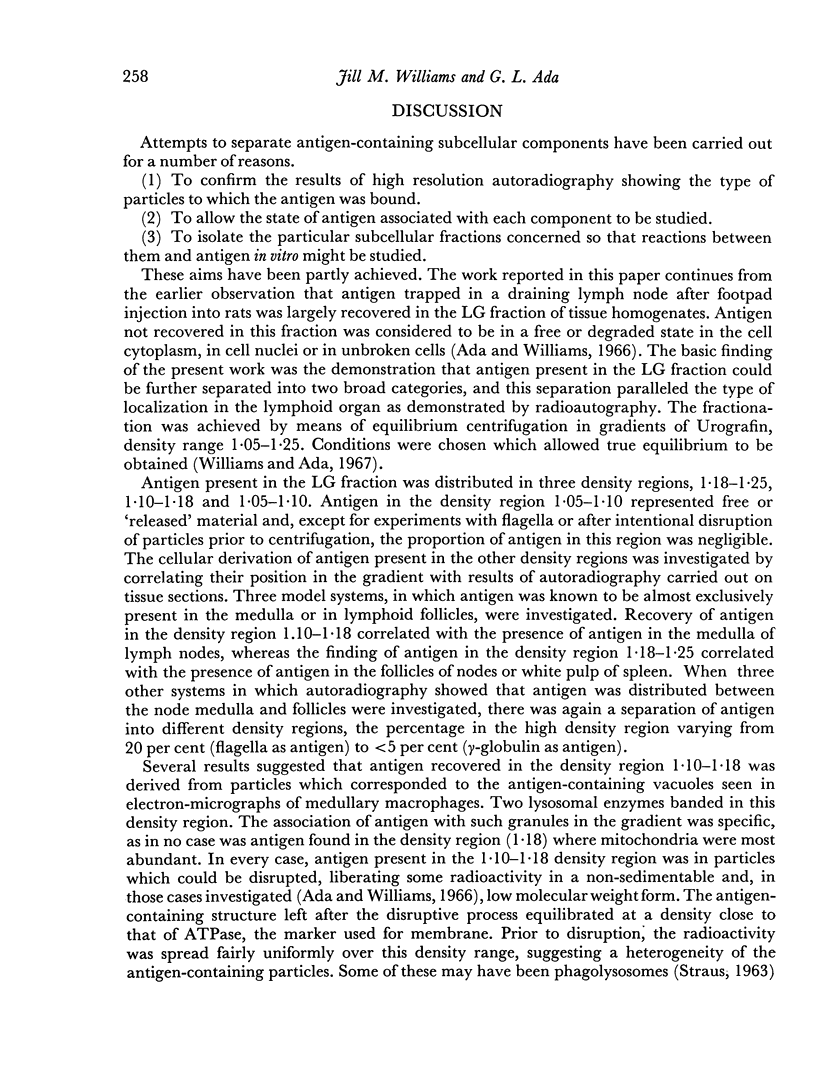
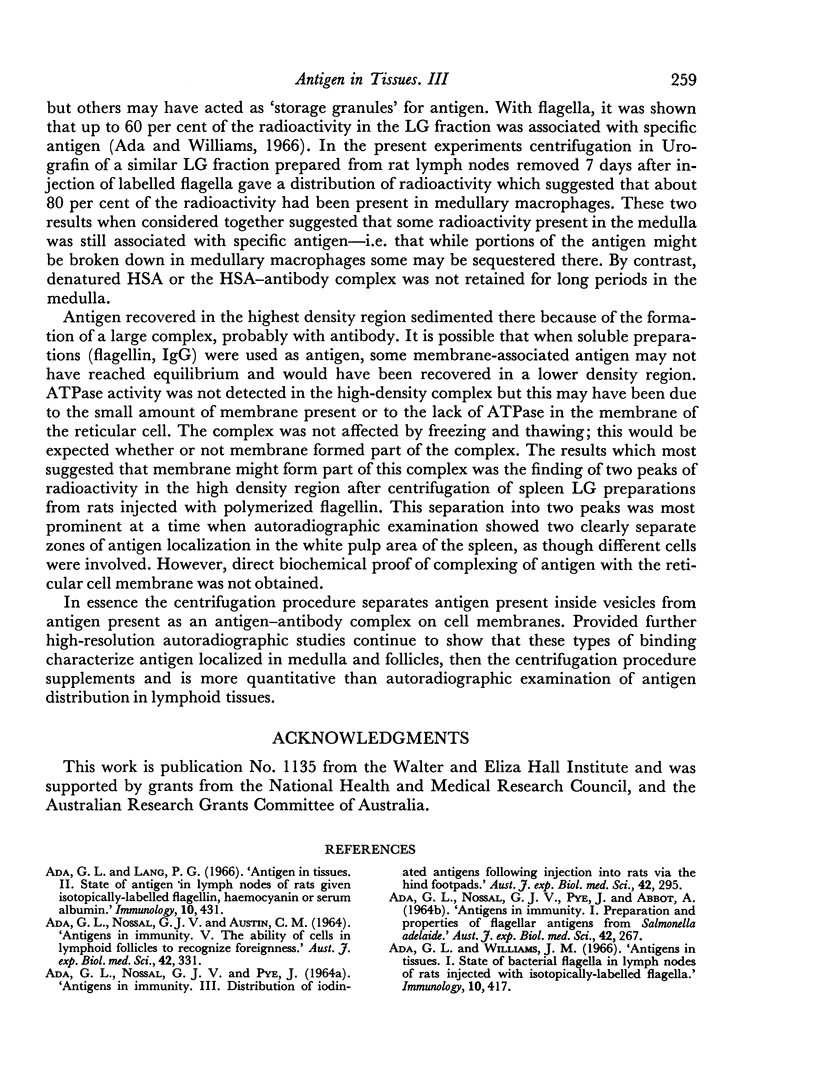

Selected References
These references are in PubMed. This may not be the complete list of references from this article.
- ADA G. L., NOSSAL G. J., AUSTIN C. M. ANTIGENS IN IMMUNITY. V. THE ABILITY OF CELLS IN LYMPHOID FOLLICLES TO RECOGNIZE FOREIGNNESS. Aust J Exp Biol Med Sci. 1964 Jun;42:331–346. [PubMed] [Google Scholar]
- ADA G. L., NOSSAL G. J., PYE J., ABBOT A. ANTIGENS IN IMMUNITY. I. PREPARATION AND PROPERTIES OF FLAGELLAR ANTIGENS FROM SALMONELLA ADELAIDE. Aust J Exp Biol Med Sci. 1964 Jun;42:267–282. [PubMed] [Google Scholar]
- ADA G. L., NOSSAL G. J., PYE J., ABBOT A. BEHAVIOUR OF ACTIVE BACTERIAL ANTIGENS DURING THE INDUCTION OF THE IMMUNE RESPONSE. I. PROPERTIES OF FLAGELLAR ANTIGENS FROM SALMONELLA. Nature. 1963 Sep 28;199:1257–1259. doi: 10.1038/1991257a0. [DOI] [PubMed] [Google Scholar]
- ADA G. L., NOSSAL G. J., PYE J. ANTIGENS IN IMMUNITY. III. DISTRIBUTION OF IODINATED ANTIGENS FOLLOWING INJECTION INTO RATS VIA THE HIND FOOTPADS. Aust J Exp Biol Med Sci. 1964 Jun;42:295–310. [PubMed] [Google Scholar]
- Lang P. G., Ada G. L. Antigen in tissues. IV. The effect of antibody on the retention and localization of antigen in rat lymph nodes. Immunology. 1967 Nov;13(5):523–534. [PMC free article] [PubMed] [Google Scholar]
- Mitchell J., Abbot A. Ultrastructure of the antigen-retaining reticulum of lymph node follicles as shown by high-resolution autoradiography. Nature. 1965 Oct 30;208(5009):500–502. doi: 10.1038/208500b0. [DOI] [PubMed] [Google Scholar]
- Nossal G. J., Austin C. M., Pye J., Mitchell J. Antigens in immunity. XII. Antigen trapping in the spleen. Int Arch Allergy Appl Immunol. 1966;29(4):368–383. [PubMed] [Google Scholar]


